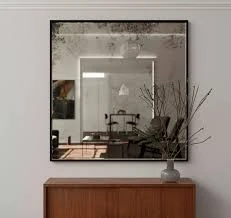

Curved Insulated Glass Units An Overview
Curved insulated glass units (CIGUs) represent a significant advancement in building design and construction, merging aesthetic appeal with functional efficiency. These innovative glass panels are specifically engineered to provide thermal insulation, sound reduction, and a unique architectural finish. As modern architecture continues to evolve, the demand for unique shapes and forms has driven the popularity of curved glass.
What exactly are curved insulated glass units? Essentially, they are multi-layered glass panels that feature a curved shape. This curvature allows architects and designers to explore a range of creative possibilities that flat glass cannot provide. Curved glass is often used in facades, skylights, and feature windows, enabling structures to have a striking and contemporary look.
One of the primary advantages of CIGUs is their energy efficiency. Insulated glass is designed with two or more glass panes separated by a spacer and filled with argon or another inert gas. This composition significantly reduces heat transfer, ensuring that buildings remain cooler in summer and warmer in winter. As energy costs continue to rise, CIGUs offer an effective solution for reducing energy consumption, thereby lowering utility bills and minimizing the environmental impact.
Moreover, the insulation properties of curved glass enhance acoustic performance. The multiple layers of glass along with the gas fill work to attenuate sound transmission, contributing to a quieter indoor environment. This aspect is particularly beneficial in urban settings where external noise can be a significant issue for residents and employees alike.

In addition to functional benefits, curved insulated glass units provide unparalleled design flexibility. The use of curved glass allows for the creation of dynamic shapes and forms, which can transform the appearance of a building. This feature is particularly appealing to modern architects who are looking to push the boundaries of conventional design. Curved glass facades can create a sense of fluidity and movement, making structures more visually engaging.
In terms of installation, CIGUs require specialized techniques and equipment due to their shape and size. The manufacturing process of curved glass also differs from that of flat glass, involving processes such as bending and heat strengthening. This complexity can lead to increased costs; however, the end result is often worth the investment due to the unique aesthetic and functional advantages offered by curved glass.
Despite their many benefits, it is crucial to consider the maintenance of curved insulated glass units. These installations can be more challenging to clean and maintain because of their curvature and often larger size. However, advancements in glass technology have led to the development of self-cleaning glass, which can alleviate some of these concerns by harnessing the power of sunlight and rain to remove dirt and grime.
In conclusion, curved insulated glass units are transforming the architectural landscape by combining beauty with performance. Their energy efficiency, acoustic benefits, and design versatility make them an attractive option for modern buildings. As technology progresses and the construction industry adapts to sustainable practices, the future of CIGUs appears bright. By integrating innovative materials like curved glass, architects can create spaces that are not only visually stunning but also comfortable and energy-efficient, truly epitomizing the best of contemporary architecture.